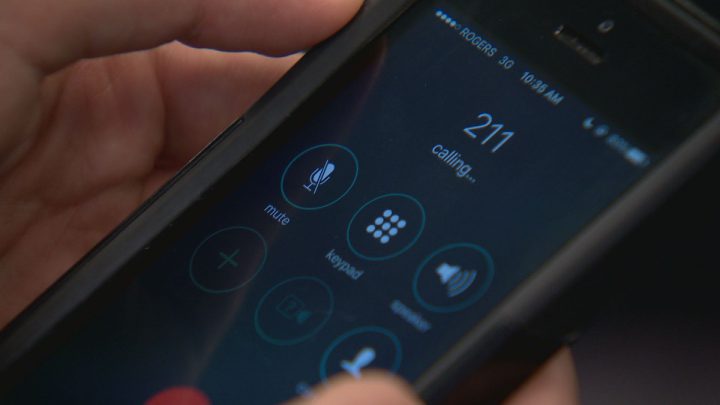Manitoba’s 211 service is gaining traction province-wide, but won’t become a number you can actually call or text without additional funding.

Manitoba’s 211 was created through a partnership between United Way Winnipeg and Volunteer Manitoba two and a half years ago, and is intended to connect people with social, government, health, or information services.
It currently only exists as a web-based platform, while several provinces across the country operate web, call, text, or messaging service.
“What is unique about 211 is that it is based around what is the type of service you’re looking for, not what is the type of agency you want to access,” says Heather Block, director of strategic initiatives at United Way Winnipeg.
The front page of the site offers more than a dozen categories, ranging from emergency and legal services, to resources for Indigenous peoples, newcomers, and youth; each category with several sub-categories.
Despite lacking the text and call feature, people are increasingly finding out about and using 211, says Block.
Its use has risen 36 per cent in just the last year in all corners of the province.
- Canadian man dies during Texas Ironman event. His widow wants answers as to why
- ‘Super lice’ are becoming more resistant to chemical shampoos. What to use instead
- Canadians more likely to eat food past best-before date. What are the risks?
- Treatment from female doctors leads to lower death rates, study finds
“What we’ve found is that generally the usage in different communities is pretty consistent with how many Manitobans live in those communities, so the word is getting out,” Block says.
According to Block, Google Analytics shows 211 is being most used by service providers looking for services for their clients outside of their own areas of expertise.
It averages 514 users each day, almost 60 per cent of whom are in Winnipeg.
Mental health and addictions is the most searched category (18 per cent), ahead of housing & homelessness (15 per cent), employment and training (9.5 per cent), and health (8.5 per cent).
Most traffic to the website comes between 8 a.m. and 6 p.m., Monday to Friday.
“Full service is certainly our goal, there are people without access to the internet and we’d be able to help them,” Block says.
“As well with phone service, they call them navigators, the navigators really work with the person calling in to find out what is the best resource for them.”
In that way, Manitoba is currently behind many of the other provinces.
All the provinces have an official 211 service except for Newfoundland and Labrador, Northwest Territories, and Yukon – however those provinces do offer comparable numbers one could dial for health services.
Of those with an official 211 service, only Manitoba, Nunavut, and New Brunswick don’t have a number to call or text.
Saskatchewan’s 211 website even boasts “175 languages, including 17 Indigenous languages” available over the phone 24/7.
It’s also in use extensively across the United States.
“We may be further behind in some ways, but we are also able to take advantage of all the learning and the technology from the other provinces, and because of that we’re very quickly catching up to be on par,” Block says.
Despite being one of the first provinces to consider launching the service, Block says the high price of technology at the time put it on hold and the cost has always proved a barrier.
She says the original site was almost entirely funded by donors, and the database was built and maintained by Volunteer Manitoba.









Comments